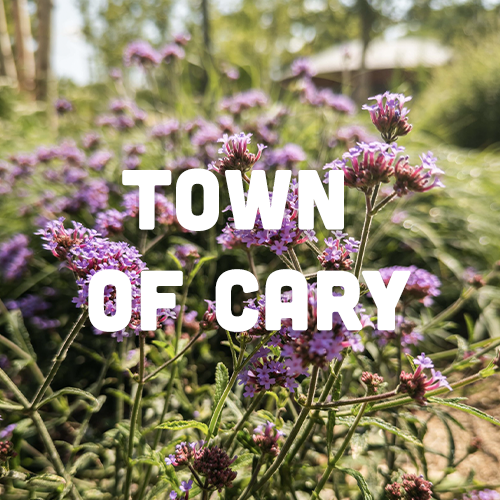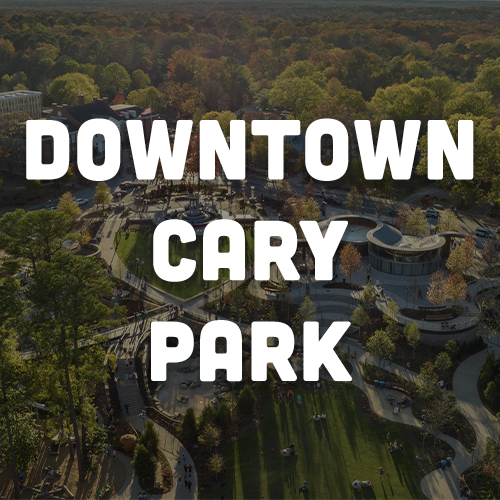Downtown Cary is a vibrant, sustainable, historic, walkable urban space, rich in charm and character. As the heart and soul of Cary, people work, live, visit, play and shop here.
Where We Started
About a decade and a half before America achieved its independence, an inn, Bradford’s Ordinary, opened in Wake County.
The business was the first in what is now the Town of Cary, and marked the beginning of more than two centuries of growth.
Railroads brought prosperity in the mid-19th century. Tobacco was king in the 1920s, and the town became a hub of innovators following the establishment of Research Triangle Park in the 1950s.
Today, Cary measures about 60 square miles and is home to about 168,000. More than 60 nationalities are represented within its borders. It was ranked the ninth-safest city in America by personal finance company SmartAsset; the third-most internet connected municipality in the country by the National Digital Inclusion Alliance; and the best city in North Carolina for income equality by the U.S. Census Bureau’s American Community Survey.
The heart of Cary remains its historic downtown. Still standing adjacent to the railroad tracks is the Second Empire-style Page-Walker Arts & History Center, which was built in 1869, and started as a hotel for train passengers. Nearby are more than two dozen historic structures, including the Queen Anne Style Guess-Ogle House with portions that date to the 1830s; the old Masonic Lodge, which now houses Ashworth Drugs and its soda fountain; and the art deco Cary Theater, which still screens movies and hosts live performances.
And it’s an area that remains vibrant, with craft breweries, bicycle paths, ethnic festivals, a farmers market, and multiple concert series.
How We Got Here
Before Incorporation
Cary got its start long before 1871. Here are some of the highlights:
A 640-mile parcel of land is granted to Francis Jones on Crabtree Creek in what is now the Town of Cary.
Bradford Ordinary, an inn owned by John Bradford, opens, becoming the first business in what is now Cary. The area in its early years was occasionally referred to by the name of the inn.
The North Carolina Railroad makes it way into what is now Cary. Though the area would not get a regular passenger stop for another 13 years, the train would pick people up when signaled.
That same year, the town’s founder, Frank Page, buys 300 acres along the tracks. He names the town after Samuel F. Cary, a leader in the temperance movement.
Page’s son, Walter Hines Page, who was born in Cary, would go on to serve as U.S. Ambassador to the United Kingdom during World War I.
Union troops under Maj. Gen. Francis Blair march into Cary about a week after Robert E. Lee’s surrender at Appomattox. Blair makes his headquarters at the Nancy Jones House.
The Second Empire-style Page-Walker Hotel is built to lodge railroad passengers. The building is today the Page-Walker Arts & History Center.
Incorporation and Beyond
After 1871, things really got moving! Here are some of the moments that shaped the Downtown we know and love.
The Town of Cary is officially incorporated. The town originally measured a square mile.
The formerly private Cary High School (which would become Cary Arts Center more than a century later) was sold to the Wake County Board of Education for $2,750, and becomes one of the first public high schools in the state. A new building is constructed in 1913.
The town sets up a Planning and Zoning Board to manage growth. Over the next decade, the town’s population would more than double.
Research Triangle Park is established. Companies and organizations that have set up shop there over the years include IBM, GlaxoSmithKline and the Centers for Disease Control and Prevention.
Cary hosts the first Lazy Daze Arts & Crafts Festival. The event today features more than 300 artists and attracts tens of thousands from across the United States.
Cary’s population hits 94,536, more than quadruple what it had been 20 years earlier. It would add an additional 13,000 residents within five years.
The Cary Arts Center opens in what had been Cary High School. The facility offers up classes, camps, live performances and exhibitions of local art.
The first phase of Downtown Park is complete. The acre-sized space features a lighted fountain and performance area. In 2019, the Town Council approved $50 million to develop six additional acres.





